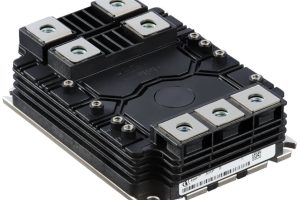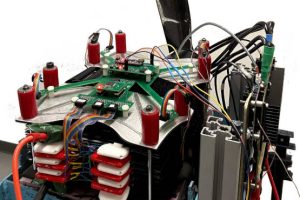Power density conundrumsRichard Wilson
One of the myths of electronics has been that power supply design was always the lastbit of a project to be tackled, implying that it was thrown together in haste. This mayhave once had the ring of truth about it, but not any more. High processor speeds, evermore restrictive space constraints, not to mention the trend for battery-powered designshas meant that the efficiency of power modules is now one of the most challenging aspectsof any design.
Where do engineers look for advice when tackling the power density conundrum?
I imagine that anyone who has needed to select an on-board DC-DC power converter, whichprobably includes most designers, is fully aware of how the Internet has increased thequantity and indeed, quality available from suppliers.
Whether it’s a 40A half brick power module or a configurable open frame powersupply that is needed, most suppliers offer design advice and in some cases customisationoptions via their websites.
Examples include, Power-One, Vicor, Artesyn, Power Integrations and Lambda.Artesyn’s online tools include SimScope, a power supply simulation tool that allowsthe user to configure I/O circuitry in the supply, set up test parameters, and then viewvoltage and current waveforms.
Looking a little wider there is National Semiconductor’s online chip-level designand prototyping tools, called Webench, which advise the engineer on the best use of thefirm’s semiconductor devices in power supply design, as well PLLs and loop filters.
Yet the availability of information does not necessarily mean that the selectionprocess has become mysteriously easier.
Component and power supply distributors are also in the front line when it comes toproviding design-in support. While most broadline distributors, names like Arrow andAvnet, RS, Farnell and Abacus Group, carry most of the leading names in DC-DC convertersand power supplies, there is a much smaller number of product specialists that live or dieby the quality of their support for power designs.
Power supply specialists for products ranging from configurable open-frames to completeUPS systems include XP, Acal, Ultimate Renaissance, Powersolve and APC. Suppliersincreasingly rely on specialists such as these to provide technical support and design-inservices.
As Joe Matano, managing director of Ultimate Renaissance points out, around 40 per centof the company’s sales involves some level of product customisation. The level ofcustomisation is inevitably broad and may not be that complicated. “Naturally we cansatisfy relatively simple adjustments to the standard PSU specification, for example todesign and supply a custom cover, trim the output voltage to meet individual requirements,or create the loom kit to enable optimum installation,” he says.
But a good power supply distributor should also be expected to go beyond the basicadvice, which is usually already available on the supplier’s website, to moresophisticated design information.
For example, says Matano, one customer asked for an external PSU capable of interfacingwith a regulator stage mounted on-board. “We were able to shrink the entire powersupply solution into the board area previously occupied by the regulation circuitry. Thecustomer was unaware it was possible,” says Matano.
This is typical of the type of design-in activity which customers should now expectfrom their power system distributors. As James Peters, managing director of XP, explains,”While most DC-DC converters are seen as commodity products, most power supplymanufacturers now rely on their distributors to do their market creation for them.”
The attraction of the specialist distributor is that a customer can get a level oftechnical support which would only be available from the supplier for very much largercustomers.
As Matano points out: “A large global manufacturer may offer to do a power supplyreference design, and give similar attention, but not for volumes that many of ourcustomers propose. The volumes may be lower, but their needs are equally urgent.” www.xpplc.com www.ur-home.com www.powersolve.co.uk www.acalelec.co.uk www.apc-plc.co.uk/disty
By Staff Posted on 7th July 2004 | Modified on 7th July 2004
Tagged with: battery diode rectifier electronics design Electronics Power lithium ion batteries mosfet Power Supply Information superconductor voltage converter voltage regulator
 Electronics Weekly Electronics Design & Components Tech News
Electronics Weekly Electronics Design & Components Tech News



